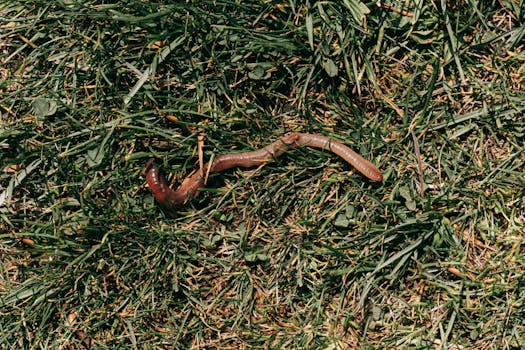Vermicompost Composting: Using Earthworms to Produce a Biofertilizer
In an era where sustainable agriculture is becoming increasingly vital, vermicomposting has emerged as a powerful method for producing high-quality organic fertilizer. This process utilizes earthworms to decompose organic waste, resulting in nutrient-rich vermicompost that can significantly enhance soil health and plant growth. This article delves into the intricacies of vermicomposting, its benefits, and practical applications.
What is Vermicomposting?
Vermicomposting is the process of using earthworms to convert organic waste into a nutrient-rich fertilizer known as vermicompost. The earthworms break down the organic matter, such as kitchen scraps, yard waste, and agricultural residues, into a dark, crumbly substance that is rich in essential nutrients.
The Role of Earthworms
Earthworms play a crucial role in the vermicomposting process. They consume organic waste and excrete it as castings, which are packed with beneficial microorganisms and nutrients. The most commonly used species for vermicomposting is the red wiggler worm (Eisenia fetida), known for its voracious appetite and ability to thrive in composting environments.
Benefits of Vermicomposting
Vermicomposting offers numerous advantages, making it an attractive option for gardeners, farmers, and environmentalists alike. Some of the key benefits include:
- Nutrient-Rich Fertilizer: Vermicompost is rich in nitrogen, phosphorus, potassium, and micronutrients, making it an excellent organic fertilizer.
- Improved Soil Structure: The addition of vermicompost enhances soil aeration, drainage, and moisture retention.
- Enhanced Microbial Activity: Vermicompost contains beneficial microorganisms that promote soil health and plant growth.
- Reduction of Waste: Vermicomposting helps divert organic waste from landfills, reducing greenhouse gas emissions.
- Cost-Effective: Producing your own vermicompost can save money on commercial fertilizers and improve crop yields.
How to Start Vermicomposting
Starting a vermicomposting system is relatively simple and can be done at home or on a larger scale. Here’s a step-by-step guide to get you started:
1. Choose a Container
Select a suitable container for your vermicomposting system. This can be a plastic bin, wooden box, or even a specially designed worm bin. Ensure it has adequate drainage and ventilation.
2. Prepare Bedding
Fill the container with bedding material, which can include shredded newspaper, cardboard, coconut coir, or peat moss. The bedding should be moist but not soggy, providing a comfortable environment for the worms.
3. Add Earthworms
Introduce red wiggler worms into the bedding. A good starting point is about one pound of worms for every square foot of surface area in your bin.
4. Feed the Worms
Feed the worms organic waste such as fruit and vegetable scraps, coffee grounds, and crushed eggshells. Avoid meat, dairy, and oily foods, as these can attract pests and create odors.
5. Maintain the System
Keep the bin in a cool, dark place and monitor moisture levels. The worms will do the work of breaking down the organic matter, and in about 2-3 months, you will have rich vermicompost ready for use.
Case Studies and Statistics
Numerous studies have highlighted the effectiveness of vermicomposting in agricultural practices. For instance, a study conducted by the University of California found that crops treated with vermicompost showed a 20-30% increase in yield compared to those treated with conventional fertilizers. Additionally, a case study in India demonstrated that farmers using vermicompost reported improved soil fertility and reduced dependency on chemical fertilizers.
Conclusion
Vermicomposting is not just a method of waste management; it is a sustainable practice that contributes to soil health and agricultural productivity. By harnessing the power of earthworms, individuals and communities can produce a high-quality biofertilizer that enriches the soil and promotes healthy plant growth. As we continue to face environmental challenges, adopting practices like vermicomposting can play a significant role in creating a more sustainable future. Whether you are a home gardener or a commercial farmer, incorporating vermicomposting into your routine can lead to healthier plants, reduced waste, and a more sustainable approach to agriculture.
